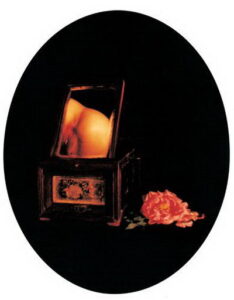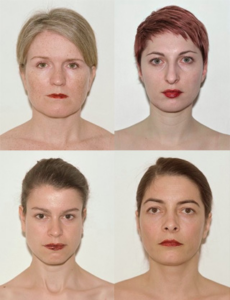Narrowing of the scope of the topic
During this week’s curatorial reflections and group discussions, I realized that there are certain problems in the actual operation of the previous curatorial proposal around “Women’s Bodies”. Although “the body” as a theme has strong theoretical appeal and critical potential, its scope is too broad, involving aesthetics of the body, gender identity, the experience of illness, etc. Trying to cover all aspects of the body will not only easily fragment the curatorial narrative, but also does not match my current limited budget and timeframe.
In Prof. Sandy’s feedback on my early curatorial drafts, she also suggested that I should try to focus on one specific direction and further focus and clarify it in the curatorial project. Taking this advice into consideration, as well as my interactions with my fellow panelists (who felt that the theme of the body was too large and complex to be presented in depth with the limited resources available), I began to revisit the core of my curatorial approach.
In the end, I decided to fine-tune the curatorial theme from “female body” to “female menstruation”-a bodily experience that has long been ignored and even stigmatized in culture and the visual arts. Compared to the totality of the “body”, “menstruation” as a specific and universal phenomenon is not only more actionable, but also able to carry my original curatorial intention of visibility, shame, aesthetics and politics. Thus, my solo curatorial project, The Bleeding Moon. This exhibition has become a deep entry into the topic of “body” – using the visibility of menstrual blood to respond to the invisibility of women’s bodies in society.
Theme for The Bleeding Moon
My solo curatorial exhibition aims to shine a spotlight on the perpetually stigmatised topic of female menstruation. With menstruation at the centre of this curatorial exhibition, the body narrative of menstruation is told through contemporary artworks. Menstruation is seen as a hidden and even defiled presence in many cultures. This exhibition hopes to break this taboo and bring the story of menstrual blood and the female body to light, advocating for de-stigmatisation and emphasising the autonomy of the female body. Through the works of several contemporary artists, the exhibition draws out the multiple parts related to menstruation, including ‘Shame and Metaphor’, ‘Blood and Body Politics’, ‘Visibility and Materiality’, ‘Cycle and Identity’, ‘Blood and Body Politics’, ‘Blood and Body Politics’, ‘Blood and Body Politics’, ‘Blood and Body Politics’, and ‘Cycles and Identity’. These sections are both independent and echo each other. Through art, I aspire to bring the audience face to face with the reality of menstruation and to dispel the sense of shame.
Curatorial Sections
Part I: Shame and Metaphor
This section focuses on the taboo and implicit expression of menstruation. Historically, menstrual blood has been depicted in metaphors due to shame. Through clever symbolism, the artists present the unspeakable, questioning why a natural physiological phenomenon should be shamed instead. The works are visually euphemistic or straightforward, exploring the cultural taboos behind the hidden ones.
Section II: Blood and Body Politics
This panel explores the power and political significance of menstruation. Menstrual blood is not only a physiological phenomenon, but also touches on issues such as social regulation of the female body, religious taboos, gender violence and public policy. The artists here focus on the body politics behind menstrual blood: some use menstrual blood to denounce atrocities against women, while others use installations to question religious and cultural constraints on women. I will choose works that elevate menstruation to a public topic, highlighting the relevance of menstrual politics
Part III: Cycle and Identity
This section explores the relationship between menstruation and identity, including women’s perceptions of their own biological cycles and how non-female groups imagine the experience of menstruation. The artists view menstruation as part of identity – be it female self-identity, group cultural identity, or transgender identity – on both a personal and social level. The works range from intimate cycle diaries to futuristic installations that show how menstruation defines and influences people’s identities and experiences.
Artists and Artworks
1.Twelve Flowers and Moon——Lingyang Chen
‘After I graduated from college in the summer of ‘99, I lived a very autistic life, with no job, very little contact with friends, and staying inside every day for about a couple of months. …… I can say that my relationship with public society dropped to almost nothing. In that case, some of the body’s physiological things will come to the fore. Things like hunger, cold, and especially menstruation, and the pain that accompanies it, emotional agitation, etc. I noticed the cycle from dawn to dusk, the slow growth of plants, and the gradual changes in the weather …… But this experience could not be said to be the reason why I made this work, it only served as a fuse that brought the subject of menstruation to my attention. Later, I found myself getting wrapped up in the subject, and I couldn’t get it out of my mind. ………… I felt it was strong enough and appropriate enough to express what I needed to say. …… Later, I used this subject to create my work. this subject matter for creative work.’ –Lingyang Chen

Twelve Flowers and Moon
Lingyang Chen creates a large-scale conceptual photography series based on the twelve months of the year that are her menstrual cycle.
Each month, she chooses flowers that bloom during that month to be framed with a part of her body during menstruation, reflecting the part of her body with menstrual blood in the mirror. The edges of the photographs are cropped into the shape of window panes in a classical Chinese garden, and each piece is named after a flower of the month corresponding to Chinese folklore, such as the plum blossom in January and the osmanthus blossom in August, forming a metaphorical structure of ‘using flowers as a metaphor for menstruation’!
By linking menstruation to the natural cycle of the four seasons, the artist gives a poetic and dignified touch to what is otherwise considered taboo, suggesting that menstruation is as natural and normal as the flowering season.
Ingrid Berthon-Moine – ‘Red is the Colour’ (2009, photographic series):
With the title Red is the Colour, French artist Ingrid Berthon-Moine invited 12 female volunteers to wear no other make-up on their Without any other make-up, they applied their menstrual blood as lipstick to their lips and then took frontal portraits.
. The series consists of twelve colour photographs, symbolising the twelve months of the year, each of which is playfully titled with a shade similar to commercial lipsticks (e.g. ‘Forbidden Red’), in order to ironise the construction and consumption of women’s images by the cosmetics industry. The women in this work look directly at the camera, their expressions are calm, as plain as a photo ID, but the menstrual blood on their lips is both abrupt and powerful. This metaphorical approach highlights the existence of menstrual blood and contrasts with the absurdity of menstrual blood being seen as ‘unseemly’ in reality.

Red is the Colour



Leave a Reply